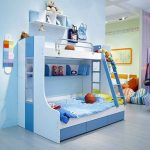Furniture for kids is an essential component in creating a comfortable and functional living space that meets their needs. When designing a child’s room, it is important to consider the furniture that will be used, as it not only serves a practical purpose but also contributes to the overall aesthetic and atmosphere of the room.
One of the key considerations when selecting furniture for kids is safety. Children are naturally curious and can be prone to accidents, so it is important to choose pieces that are sturdy and stable. Furniture with rounded corners, smooth edges, and non-toxic finishes are ideal choices for a child’s room to minimize the risk of injuries.
In addition to safety, functionality is another important factor to consider when choosing furniture for kids. Furniture that is multi-functional, such as a bunk bed with built-in storage or a desk with shelving, can help maximize space in a child’s room and provide additional storage solutions for toys, books, and other belongings.
When it comes to selecting furniture for kids, it is also important to consider their preferences and interests. Choosing furniture in vibrant colors or with fun, whimsical designs can help create a playful and inviting environment for children to enjoy. Personalizing their space with furniture that reflects their personality can also help them feel more comfortable and at home in their room.
Durability is another important consideration when choosing furniture for kids. Children can be rough on furniture, so it is important to select pieces that are made from high-quality materials that can withstand daily wear and tear. Investing in furniture that is durable and long-lasting can help save money in the long run and ensure that the furniture will last for years to come.
Finally, when selecting furniture for kids, it is important to involve them in the decision-making process. Allowing children to choose their own furniture can help foster their independence and creativity, and make their room feel like a special place that is uniquely theirs. By considering safety, functionality, style, durability, and involving children in the decision-making process, parents can create a comfortable and inviting space for kids to relax, play, and grow.
 redboth.com Decoration ideas for your home
redboth.com Decoration ideas for your home



















